2015 Midatlantic/SE/New England winter damage thread
davidrt28 (zone 7)
9 years ago
last modified: 9 years ago
Featured Answer
Sort by:Oldest
Comments (41)
bengz6westmd
9 years agobengz6westmd
9 years agolast modified: 9 years agoRelated Discussions
In New England, are David Austins a good choice?
Comments (33)Well, I think this has been a very good thread on David Austins. I appreciate everyone's input. I have made up my mind what I am purchasing this year, but I'm sad that I can't buy about a dozen more....lol. I had already decided to stick to just one order from Pickering this year and they were sold out on my favorites, so I finally decided on Harlow Carr, because of it's disease resistance, it's 'old rose' fragrance, it's ability to repeat bloom and according to the David Austin site, possibly tolerant of part shade. I have just the place for it. It is not my first choice by a long shot. Not the glamourous beautifully formed, quartered and buttoned blossoms that I really love, but I think it will suit my purpose for the time being. What has happened though, is that now I really want to grow more roses and I am very interested in growing more David Austins. So I am keeping my list and I'll just have to see if I can figure out a way to squeeze them in somewhere so I can buy more. :-) zack, thanks for saving me from Geoff Hamilton which I would be unhappy with I believe. Sharifa Asma will go on my list. rosecorgis, Glamis Castle is gorgeous and I would love to try it. I hope you will post photos this summer. Jubilee Celebration, I think I will have to check with others who might have tried to grow it in my area. From a photo, I love the color and form of that rose. dublinbay, I really dislike the BS problems and the loss of foliage that goes with it, so I appreciate knowing the problems you've had with it. York Rose, I really did want to try an Alba. Especially since I have less than full sun in an area I want to try one. I was hesitating because of the 'once bloom', but I am growing clematis too and I had forgotten that I could combine the two. So I am going to buy one Alba. I narrowed it down to Felicite Parmentier and Mme Plantier and I needed a white, so I ordered Mme Plantier. Thanks for the reminder and the link. I have not ordered from the supplier on Cape Ann, but I am going to take a good look at what they are offering this year too..... Thanks for pointing out the size of semi-plena. zyperiris, thanks for that reminder about the Dr Huey rootstock. That will keep me away from ordering DAs at the nursery. I am ordering from Pickering who uses a different rootstock I believe? Maureen, oh how I wish I had room for a large rose like that! You make a great point about looking for the added benefit of 'four season' interest on a once bloomer. Thanks to all! I think the question of whether David Austins do well in New England has been answered. Feel free to keep the thread going on your favorite David Austins. I am still making a 'wish' list as I'm sure others are as well. I was wondering which Austin is the most fragrant, which Austin repeats the best, are there any Austins that don't have droopy flowers, which blossoms last a long time? :-)...See MoreBlackberry Winter Survival 2015
Comments (28)Only slightly related to the current thread... Could someone point me to a GardenWeb thread (or two) which gives good info on year round care of my blackberries? Along with the why! It would be most appreciated. Some quick info: - We are in SE Michigan, outside Ann Arbor, recently reclassified from 5B to 6A, but I'm not so sure. - My wife is the Master Gardener, and gardens for a living, so I don't get to say too much. <grin> - She is responsible for the two rows of raspberries. - I'm from Georgia, so want my blackberries. We planted a 22[ft] row of Chester Thornless, and I am taking over responsibility for these. - We've had trouble with the red neck cane borer, and cut all canes back to the ground at the end of 2013. - I removed all but the most vigorous 5 or 6 canes from each plant at the end of 2014, because I think that's what I was supposed to do. (yes?) - I really need to know what to do right now. Spring is here and it's all about to start. So what do I look for on the canes (last year's primocanes, right?)? What do I prune off? How far back do I cut what is still there? I'm an engineer, detail oriented, data driven... but not a horticultural idiot. I've got a rather green thumb I think, but am not so good at mapping the day to day (or seasonal) efforts to the long view, big picture in the fruiting plant world. Again, any help would be much appreciated. And thanks in advance. ~Allen...See MoreShow Us Your Gardens - A photo Thread - August 2015
Comments (45)Actually no, the cucumber and summer squash seeds were not saved (by me) seeds, but came from an organic seed place, as I had not grown either in some years. It is interesting that many people have asked me what would happen if I planted the hybridized seeds. I have no idea what the answer would be! Actually hybridized mixes do occur the same year. The flowers need pollinating between their own flowers in order to develop fruits, and if pollen from another compatible species gets mixed in, the fruit will develop accordingly. My neighbor one year had a family of pumpkin/winter squash fruits that were the result of winter squash in his garden mixing with a hill of pumpkins accidentally sprung from Halloween pumpkins discarded the previous fall in a nearby weedy patch. They probably weren't edible but they made interesting curiosities on his porch railing that autumn! By the end of summer, my red, orange, and yellow nasturtium blossoms have always given way to many multi-toned specimens, as if nature took a watercolor paintbrush to them and painted streaks of orange on yellow and red on orange. When I plant the saved seeds the following year, the blooms revert to separate red, orange, and yellow blooms. These are seeds I've saved for some 8 or 10 generations now. It is remarkable how many sources on the web deny that cucumbers will cross pollinate with zucchinis or summer squash. All I can say is come look at my cucumbers with their yellow coloring and crooknecks, and tell me where, if not from their neighboring heirloom summer squash, these genes arose! The mysteries of plant biology!...See MoreShow Us Your Gardens - A photo Thread - September 2015
Comments (21)It's almost the end of September and I decided to show parts of my garden before the October thread rolls around. There's such a difference between the beginning and end of September as the season changes. The sweet autumn clematis lining the Phlox Protection Zone is now switching to seedheads and the goldenrod is blooming, but the phlox are still hanging in there. The alley is also a whole lot neater since I weeded out most of the soapwort. I left the soapwort in the Phlox Protection Zone hoping to discourage the woodchucks. The garden phlox seems able to compete with the soapwort. A volunteer aster is beginning to bloom next to the phlox (I may have transplanted it there, I don't remember, but it was a volunteer somewhere). Tall and medium-sized garden phlox (David's Lavender and Purple Kiss). Away from the alley, the hardy begonia is starting to bloom! I didn't expect it to survive last winter. This is the only survivor from three original begonias. I keep hoping it will form bulbils but I haven't seen any. A self-seeded goldenrod is thriving next to Hosta 'Stained Glass'. And a first year mullein is bedecked with white wood aster. The aster just appeared in the mullein, I had nothing to do with it. That's one of the house sansevierias behind it. Some of the sedums are a much darker color. I'm still waiting for most of the asters, and the winterberry fruits are turning red so there will still be something to show in October. Claire...See Morewhaas_5a
9 years agojqpublic
9 years agolast modified: 9 years agodavidrt28 (zone 7)
9 years agolast modified: 9 years agoedlincoln
9 years agolast modified: 9 years agoakamainegrower
9 years agobengz6westmd
9 years agoSmivies (Ontario - 5b)
9 years agoterrene
9 years agolast modified: 9 years agoDave in NoVA • N. Virginia • zone 7A
9 years agowhaas_5a
9 years agoSmivies (Ontario - 5b)
9 years agoThyme2dig NH Zone 5
9 years agodavidrt28 (zone 7)
9 years agolast modified: 9 years agobengz6westmd
9 years agodavidrt28 (zone 7)
9 years agolast modified: 9 years agodavidrt28 (zone 7)
9 years agolast modified: 9 years agoUser
9 years agomaackia
9 years agobengz6westmd
9 years agodavidrt28 (zone 7)
9 years agolast modified: 9 years agobengz6westmd
9 years agolast modified: 9 years agoDave in NoVA • N. Virginia • zone 7A
9 years agodavidrt28 (zone 7)
9 years agolast modified: 9 years agohairmetal4ever
9 years agobengz6westmd
9 years agosc77 (6b MA)
9 years agolast modified: 9 years agoMarie Tulin
9 years agoedlincoln
9 years agodavidrt28 (zone 7)
9 years agolast modified: 9 years agosc77 (6b MA)
9 years agodavidrt28 (zone 7)
9 years agolast modified: 9 years agosam_md
9 years agodavidrt28 (zone 7)
9 years agoDave in NoVA • N. Virginia • zone 7A
9 years agolast modified: 9 years agojqpublic
9 years agoDave in NoVA • N. Virginia • zone 7A
9 years agodavidrt28 (zone 7)
9 years agolast modified: 9 years agojqpublic
9 years ago
Related Stories
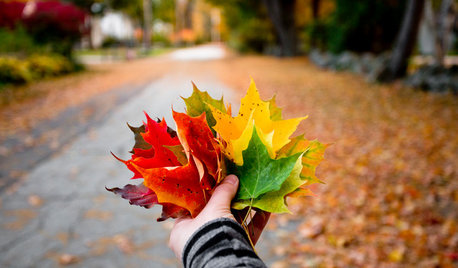
TRAVEL BY DESIGNHouzz TV: Take a Leaf-Peeping Road Trip in New England
Ride along with a Houzz contributing photographer to see gorgeous autumn eye candy from New York to New Hampshire
Full Story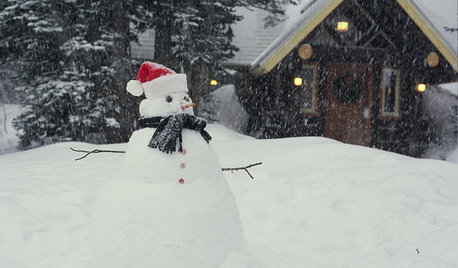
LIFEShare Your Winter Storm Jonas Photos and Survival Tips!
Let’s see your pictures and hear your ideas on how you’re keeping your house warm and staving off cabin fever
Full Story
GARDENING GUIDESGreat Design Plant: Grow Blueberries for Their Fruit and More
Eastern gardeners should consider growing blueberry plants for their delicious fruits, bee-friendly spring blooms and brilliant fall foliage
Full Story
INSIDE HOUZZHouzz Survey: See the Latest Benchmarks on Remodeling Costs and More
The annual Houzz & Home survey reveals what you can expect to pay for a renovation project and how long it may take
Full Story
GREEN BUILDINGHow to Harvest Rainwater for Your Garden
Conserve a vital resource and save money by collecting stormwater for irrigation in a barrel or tank
Full Story
TRADITIONAL HOMESHouzz Tour: Redo Shines Light on 19th-Century Newport Beauty
The renovated Rhode Island home boasts gorgeous woodwork, an appealing wraparound porch and a newly spacious kitchen
Full Story
FRONT YARD IDEASBefore and After: Front Lawn to Prairie Garden
How they did it: Homeowners create a plan, stick to it and keep the neighbors (and wildlife) in mind
Full Story
MATERIALSInsulation Basics: What to Know About Spray Foam
Learn what exactly spray foam is, the pros and cons of using it and why you shouldn’t mess around with installation
Full Story
CONTRACTOR TIPSBuilding Permits: What to Know About Green Building and Energy Codes
In Part 4 of our series examining the residential permit process, we review typical green building and energy code requirements
Full Story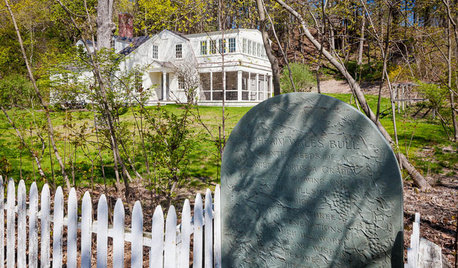
TRADITIONAL HOMESHouzz Tour: Historic Concord Grapevine Cottage’s Charms Restored
This famous property had fallen on hard times, but passionate homeowners lovingly brought it back
Full Story



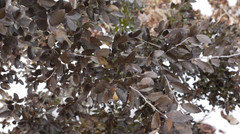

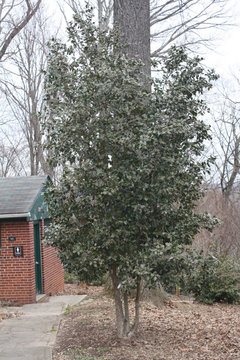
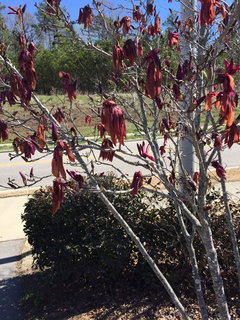


davidrt28 (zone 7)Original Author